

US
ARMY
US ARMY AIR FORCES
US AIR FORCE
DOCUMENTS BACKGROUND
US ARMY AIR FORCES
US AIR FORCE
DOCUMENTS BACKGROUND


Aircraft Accident Reports 1908-1955
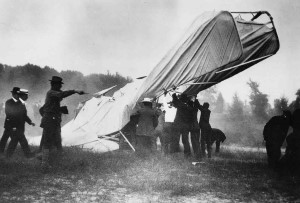
The first US Army airplane death was on September 17, 1908
First Lieutenant Thomas E Selfridge died in the crash of a
Wright Flyer operatated by Orville Wright
Aircraft Accident Reports for the US Air Force began
in 1908 under the US Army Signal Corps, Aviation Section.
Reporting in the early days of aviation was based on local instructions,
inconsistent and often not detailed. Very many
of the reports for accidents through to the end of World War I were
either not archived or not created at all. A
few
lists of these incidents exist, but no collection
containing all of these reports has been found in any archives. After
the First
World War, much greater attention was paid
to flying safety and formal procedures for aircraft accident investigation
and reporting were developed. Those procedures
continued to improve through the days of the Army Air Service, Army
Air Corps, Army Air Forces, and continue to be a critical part of the
US Air Force today.

USAF civilian employees file aircraft accident reports
in the 1950s
The reports were maintained by the Office of Flying Safety under several
names over the years. Regulations called for the
destruction of these documents after a few years, but the Air Force
saw them as a valuable tool for accident analysis and kept
all of them indefinitely. The reports from the WWII era averaged 20-30
pages each and took up a lot of space, but many of the
reports from the fifties were hundreds of pages. At one point, they
held over 150,000 reports in file cabinets. The Air Force
decided to convert all of the reports to microfilm in the late 1950s.
It was unimaginable that the reports would ever be released
to the public, so only a single copy of the microfilm was made, which
was used regularly for the next 40 years. The original
documents were held by the National Archives for many years, but the
USAF ordered them destroyed around 1980.

USAF civilians review documents on microfilm
There was always great of public interest in these documents and by
1996 the FOI requests overwhelmed the flying safety
staff and the Air Force decided to release reports for up to the end
of 1955. They were on 1200 reels of 16mm microfilm. We
were the first to obtain some of these reels and continued for years
until we had them all. These reports are
fully indexed, but
we are in the process of reindexing to add additional fields. Those
indexes are available on this site.

Reels for late 1942 through late 1943
Details of Accident Report Files

Report from 1911
1908-1940 (Over 10,000 Reports)
The reports for up to the end of 1940 are filed alphabetically. Most
of the accidents, other than some in WWI occurred
in the continental United States, or territories of Hawaii, Puerto Rico,
Panama Canal Zone, and Philippine Islands.
There are a great number of additional incidents for 1918-1920 that
are not included. The reports no longer exists and
the poor conditioned lists of these incidents have not yet been indexed.
In addition, one reel was lost over the years and the
reports are gone forever (Names BUL-CAP)

Report from 1943
1941-1945 (Over 90,000 Reports)
Beginning of 1941, reports were filed by date and the sequence they
were reported. The US began to increase the number
of airplanes and pilots as WWII approached. New aircraft and aircraft
systems, plus new pilots, aircrew members, and
aircraft maintainers added to the massive increase in overall flying
hours, which caused aircraft accident numbers to
skyrocket. There were many times in 1943 when over 100 accidents occurred
with dozens of fatalities on a single day. That
number does not include combat losses. In November 1944, major and minor
accidents were split into separate
investigating reporting procedures. Accident numbers decreased drastically
after the end of the war.
1946-1955 (Over 36000 Reports)
Demobilization caused flying, especially flying training to decline
in the period after WWII. Accident numbers remained low, but still
much higher than before the war. The Army Air Forces split from the
Army in 1947 and the US Air Force was born, as well as the
Cold War soon after. Accident numbers increased as the United States
flew missions from new permanent bases all over the world
and even more after the start of the Korean War. In 1953, “aircraft
incident” reports were added to the documentation. These
reports covered incidents that did not meet minor accident reporting
requirements, but needed to be documented for various reasons.
The reports stop at December 31, 1955. Later reports could not be released
by the Air Force due to legal issues. We have a few
dozen of these, but only partial reports obtained through freedom of
information requests. Otherwise, Reports from 1956 forward
are still managed by the USAF Safety Agency, Kirtland AFB, NM
Missing Air Crew Reports 1941-1948
Missing Air Crew Reports began in May 1943
for all AAF commands outside of the continetnal limits of the United
States to record
the facts of the last known circumstances regarding missing air crews.
MACRs would also provide a future means to integrate data
obtained from other sources in an effort to determine the fate of missing
personnel. Many of the later MACRs were not submitted by
AAF comands, but created by the Identification Branch of the Memorial
Division, Office of the Quartermaster General. They were
created for cases in which no MACR was filed and cases in which inquiries
were received from military sources or next of kin.
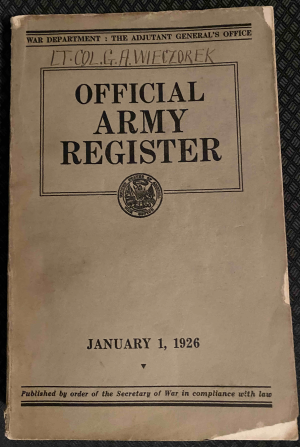
Army and Air Force Registers
These registers were published annually and list all
of the active duty officers and summaries of thier careers. We do not
have every
issue, but our files span roughly 1813-1972 for the Army Register and
1949-1979 for the Air Force Registers.
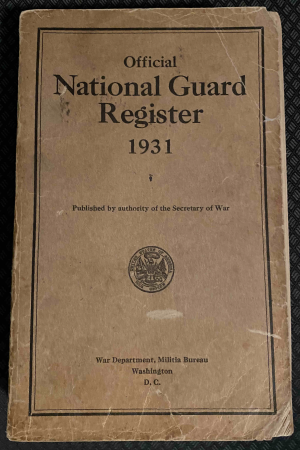
National Guard Registers
These registers were published irregularly
until after WWII, then annually for both the Air and Army National Guard.
They list
all of the assigned officers and summaries of thier careers. We do not
have every issue, but many for 1920-1980.

Escape and Evasion Reports
These documents were created when missing airmen found their way back
to friendly forced. They document observations as to the
fate of their crew, enemy activities, how they made it out and who helped
them. They contain very real first-hand accounts of escape
and survival.

Special Orders
Special Orders are a series of numbered documents published
by various commands that provide an announcement or directive
effecting the status or activities of individuals. We have a broken
set from 1881-1946 and many individuals from various commands
General Orders
General Orders are a series of numbered
documents published by various commands containing announcements or
official acts such
as unit citations, awards, important appointments or matters of information
or directives. We had them for the War Department/
US Army 1934-1960 and for the WWII 12th and 15th Air Forces.
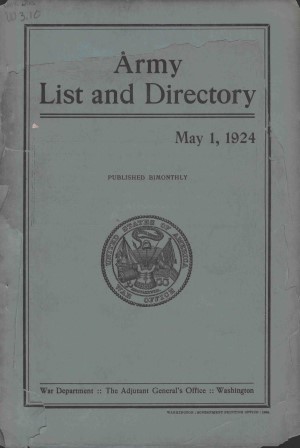
Army List and Directory 1918-1943
These directories were published quarterly and later
semiannually by the War Department and lists all Regular Army, rank,
branch of service and duty station. They also include a list of military
posts, promotion sequences, and lists of those recently
lost to retirement, discharge or death.
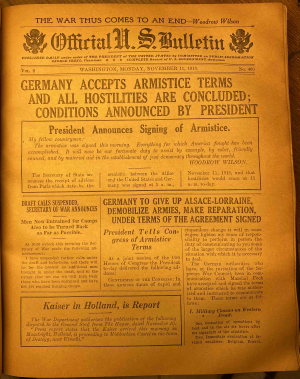
US Official Bulletin 1917-1920
Lists military activities, promotions, assignments, casualties, and transfers
© M T Stowe & G C Robbins All Rights Reserved. 2021-2022 Contents
of this site may not be reproduced or
retransmitted in any form without express written permission of the owner.